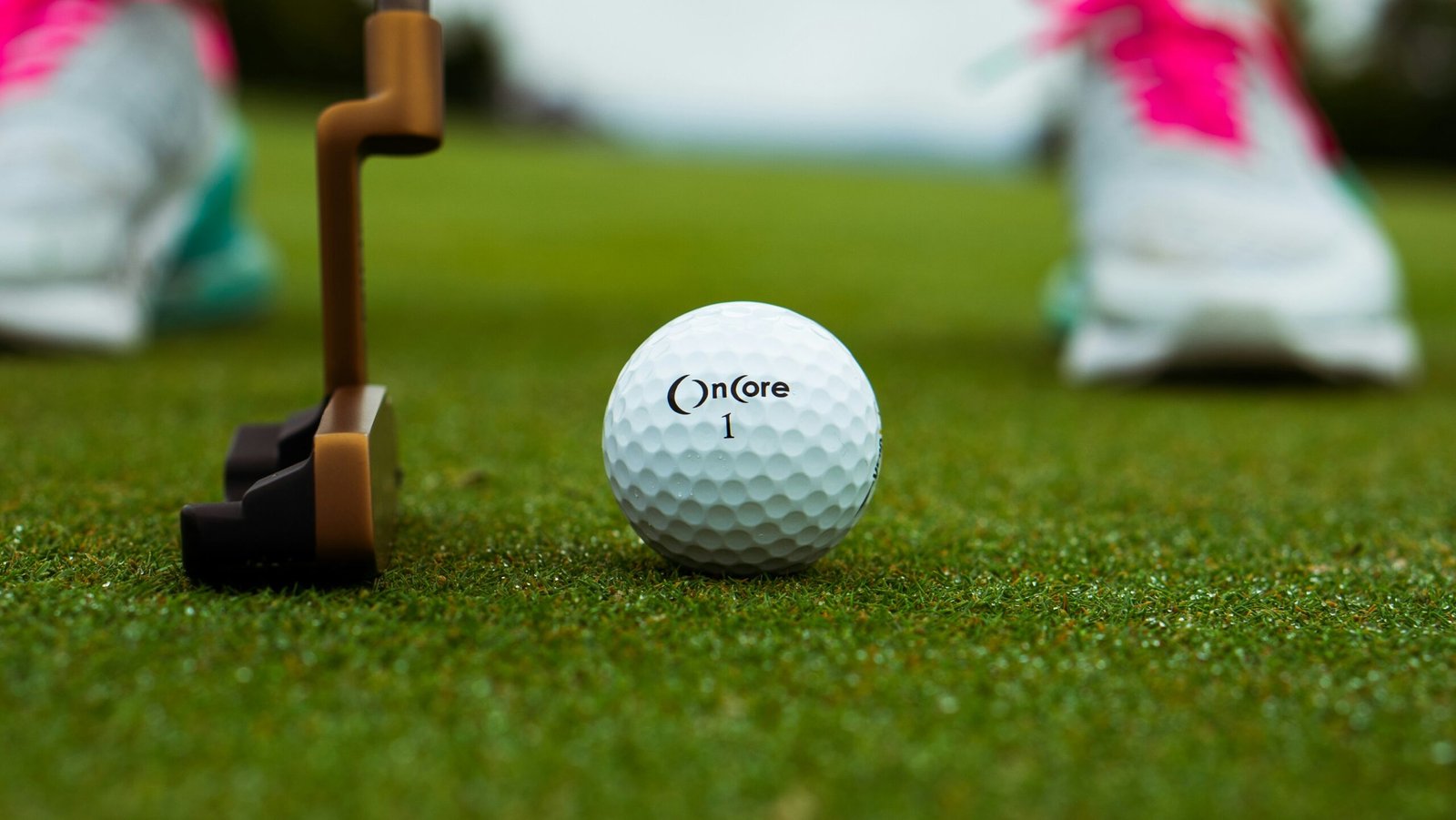
Understanding Golf Ball Construction
When selecting the ideal golf ball for your game, it is crucial to understand the different constructions available in the market. Golf balls generally fall into three main categories: two-piece, three-piece, and four-piece constructions, each defined by their unique characteristics and performance metrics.
Two-piece golf balls consist of a solid rubber core encased in a durable outer cover, typically made from ionomer or Surlyn material. This construction provides enhanced distance and durability, making it ideal for beginners or casual players who prioritize a straight flight path. The solid core also limits spin, which contributes to a more controlled trajectory, thereby catering to those who may struggle with slice or hook tendencies.
Three-piece golf balls introduce an additional layer, known as the mantle, which sits between the core and the outer cover. The mantle is typically crafted from a softer material allowing for improved spin control and enhanced feel upon impact. This construction is well-suited for intermediate players who seek a balance between distance and greenside performance. The added spin capability enables golfers to execute delicate shots around the greens.
Four-piece golf balls take performance to another level, featuring multiple layers designed to optimize distance, spin, and feel. These balls typically have a soft inner core for maximum energy transfer, a firmer mantle for increased spin control, and a premium outer cover for enhanced feel and durability. Players with a more advanced skill set, who can benefit from refined spin control and shot-making capabilities, often gravitate towards this type of ball.
Common materials used in golf ball manufacturing, such as urethane for the cover and various rubbers for the core, influence not only the performance characteristics but also the overall feel and behavior of the ball on the course. Understanding these various construction types helps golfers make informed choices tailored to their skill level and playing style.
Type
Two Piece
Three Piece
Four Piece
Assessing Your Skill Level and Playing Style
Choosing the right golf ball is a crucial aspect of enhancing your game, and the first step in this process is accurately assessing your skill level and playing style. Golfers can be categorized into various skill levels ranging from beginners to advanced players, each with unique needs. Beginners may require a ball that offers considerable forgiveness, enabling them to achieve greater distance and accuracy despite less consistent swings. In contrast, advanced players might seek a ball that provides increased control and spin for more refined shots.
Another important factor in evaluating your golf game is your swing speed. Golfers with slower swing speeds typically benefit from a higher launch angle and softer compression golf balls. This combination can help maximize distance and achieve optimal flight. Conversely, players with faster swing speeds often prefer a firmer ball that can withstand the force of their swing while providing durability and enhanced feel. Understanding your swing speed not only aids in ball selection but also in improving your overall performance on the course.
The conditions in which you typically play should also be factored into your decision-making process. For example, if you often play on courses with fast greens, opting for a golf ball that offers better spin control could significantly enhance your short game. Additionally, weather conditions, such as wind and humidity, can influence how balls perform. Thus, recognizing your frequently encountered playing conditions is essential for selecting a ball that complements your style.
Ultimately, golfers should take the time to reflect on their unique attributes and how these influence golf ball choice. By considering elements like skill level, swing speed, and playing conditions, you can find a golf ball that not only meets your needs but also enhances your enjoyment of the game.
Type
Soft
Hard
The Importance of Ball Compression and Spin Rate
When choosing the right golf ball, understanding ball compression and spin rate is crucial for optimizing performance on the course. These two metrics play a significant role in influencing distance, control, and overall playability, particularly under varying conditions. Ball compression refers to the degree to which a golf ball deforms under the impact of a clubface. Softer balls, characterized by lower compression ratings, tend to compress more easily, making them ideal for players with slower swing speeds. Conversely, players possessing higher swing speeds often benefit from harder balls with higher compression ratings, as these balls yield greater distance due to reduced deformation.
Spin rate, another essential consideration, describes how much a golf ball spins after it is struck. This characteristic significantly affects a player’s ability to control shots, especially around the greens. High spin rates can enhance control on approach shots and increase stopping power once the ball lands. However, excessive spin rates can lead to undesirable outcomes, such as slices and hooks, impacting overall accuracy. For players who primarily utilize a varied short game approach, selecting balls that produce optimal spin rates are beneficial for executing delicate shots with precision.
In summary, the interplay of ball compression and spin rate greatly influences how a player interacts with the golf ball throughout their game. Choosing the appropriate golf ball for one’s swing speed and desired spin characteristics can elevate performance, whether it is aimed at achieving distance or ensuring control close to the pin. Golfers should always assess their play style and swing dynamics when selecting a ball, as this will significantly impact their overall experience on the course.
Type
High Spin
Low Spin
Testing and Finding Your Ideal Golf Ball
Choosing the right golf ball can significantly impact your performance on the course. To find your ideal golf ball, it is essential to conduct practical tests that evaluate various aspects of ball performance. A recommended approach involves undertaking field tests that replicate real-course conditions. This allows you to assess how each ball reacts under different scenarios, which is critical for understanding its impact on your game.
When testing golf balls, begin with a focus on distance and control. Start by hitting drives with different types of balls to measure how well each performs in terms of distance. Pay attention to how the ball feels upon impact as well, since this can influence your confidence and consistency. Additionally, perform short game tests, such as chipping and putting, to evaluate how well each ball reacts around the greens. Different balls will have varying spin rates and response, affecting your ability to control shots in close proximity to the hole.
Another effective method to find your preferred golf ball is to seek feedback from a golf pro or instructor. Professionals possess a wealth of knowledge and can provide valuable insights into how specific balls match your swing characteristics and playing style. Their guidance can help narrow down your options based on objective criteria, such as ball speed, spin rate, and overall feel.
While testing single golf balls can yield useful data, it is also beneficial to experiment with multiple types during your practice sessions. Doing so will allow you to identify personal preferences, as comfort with a ball’s performance can vary widely among golfers. Therefore, embracing a hands-on approach to testing balls will not only improve your understanding but also empower you to make an informed decision tailored to your unique game.






